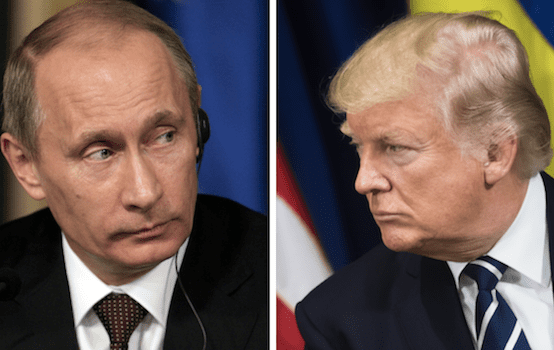The Lone Treaty Holding U.S. and Russian Nukes in Check is About to Expire

On July 18, senior U.S. and Russian officials met in Geneva for a long overdue discussion about arms control issues. According to the State Department, the talks were a continuation of the bilateral Strategic Security Dialogue designed to increase understanding between the two nuclear superpowers.
One can only hope the New START agreement was part of the conversation. If both countries continue to dither and neglect to renew the treaty before it expires in February 2021, it will make the prospect of a 21st-century nuclear arms race much more likely.
At bottom, New START was a limited arms control measure. Its critics rightly point out that it doesn’t cover short-range, tactical nuclear weapons or the ever-sophisticated hypersonic and conventional weapons systems Washington and Moscow are investing in. What the agreement does do, however, is cap the number of nuclear warheads both countries can put on deployed delivery systems such as intercontinental ballistic missiles, submarine-launched ballistic missiles, and heavy bombers to 1,550 each. Just as important, the accord also reduced the number of those deployed delivery systems to 700. The result has been a relatively stable nuclear equilibrium between the two nations that together possess approximately 90 percent of the world’s nuclear weapons.
U.S.-Russia relations, however, are currently weighed down by a number of significant disagreements, all of which have helped degrade a relationship that every American president since the end of the Cold War has attempted to improve.
Strategic issues haven’t been immune. Citing Russian violations, the Trump administration withdrew from the 31-year-old Intermediate Nuclear Forces Treaty that banned the deployment of ground-based ballistic and cruise missiles between 500 and 5,500 kilometers. Because Moscow refused to allay Washington’s concerns about the development and testing of a ground-based missile system that violates the treaty’s restrictions, the INF has now gone the way of the dinosaurs.
New START is now the only arms control agreement on the books keeping the U.S. and Russia from expanding their nuclear weapons arsenals. Indeed, without New START in effect, there is nothing stopping either country from producing as many nuclear warheads as it wants. Permitting the accord to lapse without a replacement would be the very definition of an own goal—removing the on-site verification regime that has kept both sides honest; introducing unpredictability into the strategic environment; and demonstrating to other nations, like China, that arms control is a dying concept.
To his credit, President Donald Trump doesn’t want another arms race. During a meeting with the Chinese vice premier in the spring, Trump commented, “[B]etween Russia and China and us, we’re all making hundreds of billions of dollars’ worth of weapons, including nuclear, which is ridiculous.” There appears to have been an acknowledgment from the president that building more nuclear weapons does not necessarily yield more security for the United States.
Unfortunately, the president is going about arms control in the wrong way. He is increasing the likelihood that, by 2021, the entire arms control regime that has been in place for over half a century will be history.
Rather than continuing to operate on what the White House describes as a Cold War-era framework, the president hopes to include Beijing in the next round of talks and cement its agreement to a trilateral nuclear weapons reduction mechanism. Yet if the administration is aiming to replace or preface an extension of New START with a grand nuclear bargain that covers China, it’s making a terrible mistake.
Chinese officials have already expressed their strong opposition to such a structure, and it is easy to see why. With roughly 290 nuclear weapons, Beijing’s arsenal is approximately one twenty-first the size of the U.S. stockpile and one twenty-third the size of Russia’s. In China’s view, it simply doesn’t make sense to cooperate in a trilateral negotiation until it reaches parity with the Americans and Russians. That position is unlikely to change.
The administration is therefore left with a choice. It can hold an extension of New START hostage and continue to press the Chinese to become involved in a new set of arms talks—shooting itself in the foot. Or it can toss idealistic ambitions aside and get realistic.
There may be a time in the future when China is willing to discuss reductions to its own arsenal. But now is not that time. In the interim, there is no reason for Washington and Moscow to sit on their hands when the clock is literally ticking. There is nothing preventing negotiators from sitting down at the table today and engaging in the hard but necessary work of maintaining strategic stability.
If there is any issue on which the U.S. and Russia share a mutual national security interest, it’s ensuring transparency and predictability in the nuclear realm. Expanding New START for an additional five years is low-hanging fruit for the United States. It’s long past time for Washington to pluck it.
Rear Admiral (ret) Leendert “Len” Hering is the former Commander Navy Region Southwest, Region Northwest, Surface Group Pacific Northwest, Commanding Officer the USS Doyle (FFG 39) during Desert Strike, and served as Action Officer Joint Operations Directorate J-33, The Joint Staff. He is a fellow at the American College of National Security Leaders.
Comments